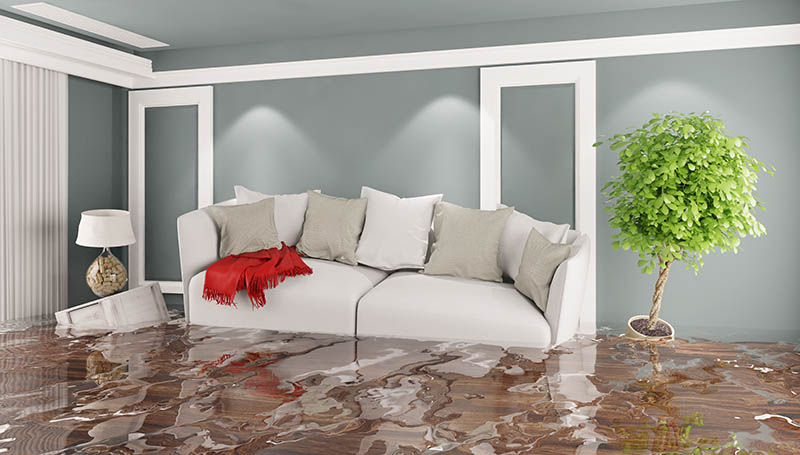Getting to Know What Leads To Water Leakage Happen Frequently Within Your Residence
Getting to Know What Leads To Water Leakage Happen Frequently Within Your Residence
Blog Article
What're your thoughts on How to detect water leaks in your home?

Leaks not just trigger waste of water but can also cause unnecessary damages to your residence and also promote undesirable organic growth. Water leaks may go undetected because many of the pipework in our house is concealed. By looking as well as recognizing for everyday circumstances that trigger leaks, you can shield your residence from future leaks and also unnecessary damage. Today, we will consider six leakage creates that might be causing your pipelines to trickle.
Trespassing origins
The majority of water leaks start outside the residence instead than inside it. You could notice wet spots or sinkholes in your backyard, and that might imply that tree roots are invading water lines triggering water to seep out.
Corroded water systems
As time passes by, your plumbing system ages as well as corrosion such as rust may begin eating away the pipes. This may be the cause of staining or warping on your water pipes. This calls for an inspection with your plumber immediately. Consider changing the pipes because they are at a greater threat of rust than the newer designs if our plumbing system is old.
Faulty Pipeline Joints
The factor at which your pipelines link is regularly the weakest link in the waterline. Pipeline joints can deteriorate in time, leading to water leaks. Regrettably, most of pipe joints are not quickly visible. If you have noisy pipes that make ticking or banging sounds, especially when the warm water is activated, your pipe joints are probably under a great deal of pressure. It is advisable to have your plumber evaluate your system once a year.
Immediate temperature level modifications.
Severe temperature level adjustments in our pipelines can create them to broaden as well as contract all of a sudden. This growth and tightening may trigger cracks in the pipelines, especially if the temperature are below freezing. It would be best if you kept an eye on how your plumbing works. The visibility of the previously stated scenarios frequently indicates a high danger.
Poor Water Connectors
Sometimes, a leakage can be caused by loose hoses and pipelines that provide your appliances. Most of the time, shifting is what triggers the loose water Links. You could locate when it comes to a washing machine, a pipe might spring a leakage due to shaking throughout the spin cycle. In case of a water links leakage, you may see water running directly from the supply line or puddles around your devices.
Obstructed Drains
Clogged drains may be frustrating and inconveniencing, however they can sometimes end up triggering an overflow bring about burst pipelines. Maintain removing any products that might drop your drains pipes that can obstruct them to avoid such inconveniences.
All the above are reasons for leakages however not all water leaks result from plumbing leaks; some leakages could originate from roof covering leakages. All leakages must be repaired instantly to avoid water damages.
Leakages not only create waste of water however can likewise cause unneeded damages to your residence and promote undesirable organic growth. By looking and also recognizing for daily situations that create leakages, you can safeguard your house from future leaks as well as unnecessary damage. Today, we will look at six leak creates that may be creating your pipes to leak.
At times, a leakage can be caused by loosened tubes and pipelines that provide your appliances. In situation of a water links leakage, you might notice water running directly from the supply line or pools around your devices.
How To Check For Water Leak In Your Home
How To Check for Leaks
The average household's leaks can account for nearly 10,000 gallons of water wasted every year and ten percent of homes have leaks that waste 90 gallons or more per day. Common types of leaks found in the home are worn toilet flappers, dripping faucets, and other leaking valves. These types of leaks are often easy to fix, requiring only a few tools and hardware that can pay for themselves in water savings. Fixing easily corrected household water leaks can save homeowners about 10 percent on their water bills.
To check for leaks in your home, you first need to determine whether you're wasting water and then identify the source of the leak. Here are some tips for finding leaks:
Take a look at your water usage during a colder month, such as January or February. If a family of four exceeds 12,000 gallons per month, there are serious leaks.
Check your water meter before and after a two-hour period when no water is being used. If the meter changes at all, you probably have a leak.
Identify toilet leaks by placing a drop of food coloring in the toilet tank. If any color shows up in the bowl after 10 minutes, you have a leak. (Be sure to flush immediately after the experiment to avoid staining the tank.)
Examine faucet gaskets and pipe fittings for any water on the outside of the pipe to check for surface leaks.
Undetected water leaks can happen without the home or business owner even realizing. If you suspect a water leak, but not able to find the source. It is time to contact a professional water leak detection service, The Leak Doctor.
How To Find a Water Leak In Your Home
https://www.leakdoctor.com/blog/How-To-Check-For-Water-Leak-In-Your-Home_AE197.html

Hopefully you enjoyed reading our article on Top Causes of Home Water Leaks. Thank you for taking a few minutes to read our blog. Kindly take a moment to share this content if you liked it. Thanks for going through it.
This Website Report this page